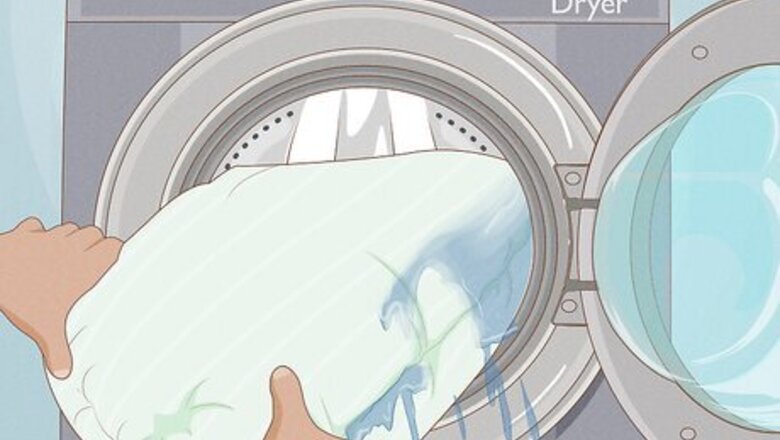
views
- Once your pillows have been washed, gently squeeze excess water into your washtub or sink. Then, toss your pillow into the dryer.
- Add in dryer or tennis balls to fluff your pillow as it dries. Then, set your dryer to the lowest heat setting to ensure your pillow fibers don’t break down and start your load.
- Dry your pillow in 45-65 minute increments, shaking it out between loads. Then, remove your pillow from the dryer once it’s dry and lie the pillow flat in the sun to cool.
Using a Household Dryer to Dry Fiber or Down Pillows
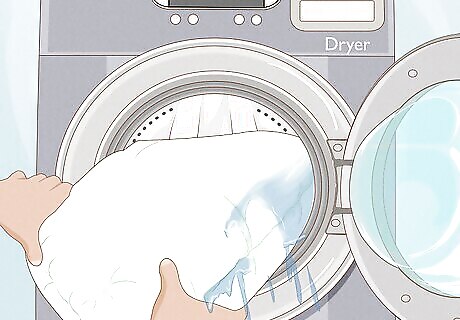
Toss pillows in the dryer immediately. Once your pillows have been washed, gently squeeze excess water into your wash tub or sink. Put the pillows in the dryer, but do not overload the dryer. Remember, your pillows will expand as they dry!

Set your dryer to a very low heat. The fibers in pillows can break down under high heat. Choose a low heat or air dry setting on your dryer for a dry cycle that will keep your pillows safe.
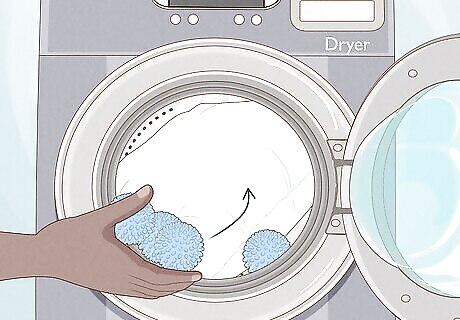
Add dryer balls or tennis balls. The balls will bounce around with the pillows in the dryer and keep the filling from clumping. Your pillows will get fluffy while they dry, too, which will allow the filling to spread out for faster drying. If you use tennis balls, you can put them inside clean socks to avoid getting tennis ball lint on your pillows.
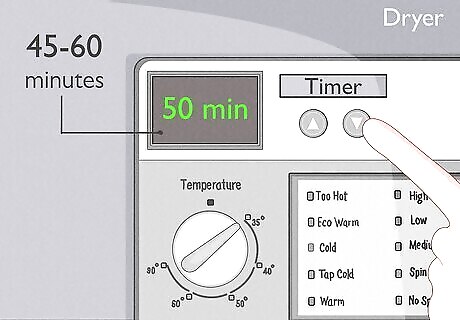
Dry for 45-60 minutes at a time. Since you are using low or no heat, the pillows may need to go through a few cycles before they're completely dry. After each cycle, remove the pillows from the dryer and fluff them by giving them a good shake.
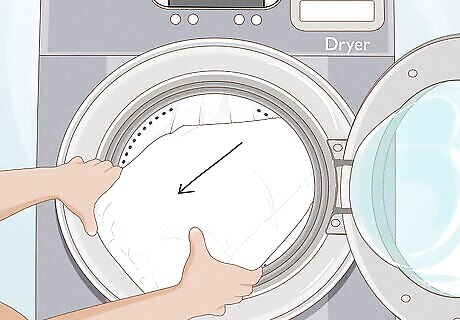
Remove the pillow from the dryer. Give your pillow a great big squeeze to make sure it’s dry on all sides, especially in the corners. Sniff the pillow to make sure there aren’t any bad smells, which might mean it's not completely dry.

Lay the pillow flat in the sun. Allow your pillow to cool outside of the dryer. This will help remove any musty smells from laundering, and ensure the pillow is finished drying.
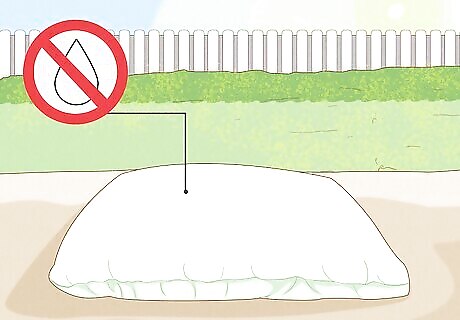
Make sure pillows are completely dry. A hot pillow can feel drier than it is! Before you put your pillow back in its pillowcase or use it, give it one last touch test to make sure it’s fully dry. Pat hard on both sides to check for any damp spots. If the pillow is still damp, you can put it in the dryer again as needed.
Drying a Fiber or Down Pillow without a Dryer

Choose a dry, sunny day. You can dry your pillow outdoors or indoors. Make sure it is a dry day, and if possible let your pillow get some sun! Indoors, you can place your pillow in front of a window to get light. You can protect your floors and furniture with towels so they don't get wet from the pillow. Move electronics. Water and electricity don't mix!
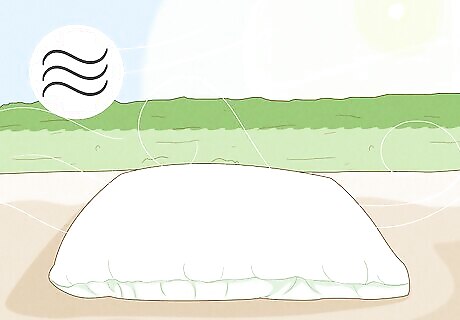
Place on clothesline or position to dry. Your pillow will dry faster with the most air flow. If you can't hang the pillow from a clothesline, position it so that most of the surface is exposed to the air. You may also lay your pillow flat to dry, but you will need to check it often to break up any filling lumps that may form as it dries.
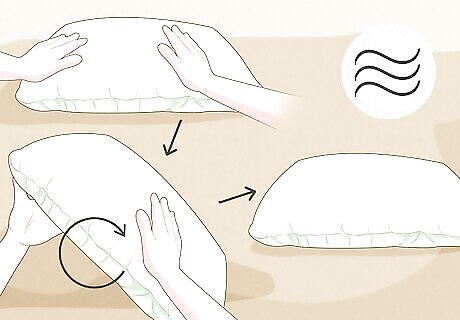
Fluff and turn every hour or two. As your pillow dries, the filling will cling to itself. Pick up your drying pillow every hour or two and shake and massage to prevent the filling from forming lumps. You want your clean pillow to be comfortable once it's dry!
Drying a Memory Foam Pillow
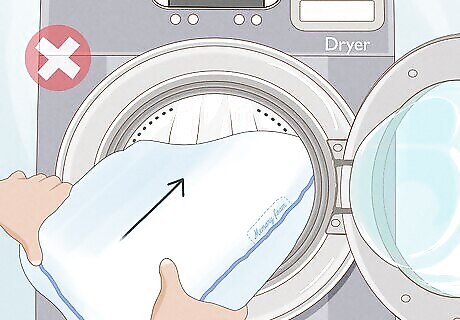
Don't put Memory Foam in the dryer. Memory Foam, latex, and silk pillows do not react well to direct heat. Using the dryer on these types of pillows may break down the fibers and damage the pillows.
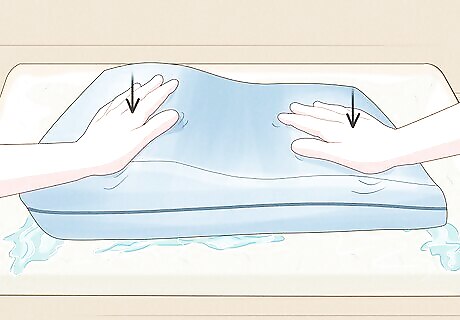
Squeeze gently to remove excess water. Memory Foam tends to hold water like a sponge, so take your time and be very gentle in order to prevent damage to your pillow. Don't try to wring out a Memory Foam pillow!
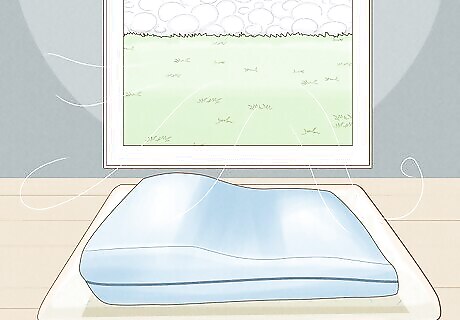
Place flat in a well-ventilated area. Hang your Memory Foam pillow on a clothesline to dry, or lay it flat in an area with good circulation. Air is key to getting these pillows dry. If you dry your Memory Foam pillow indoors, you may wish to place a fan on the pillow to help dry. Low-humidity days are best for the fastest drying.
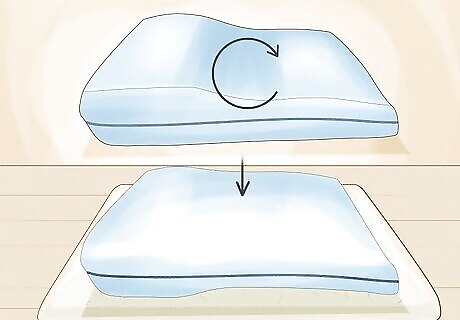
Flip the pillow often. Moisture will pool below the pillow. You can lay a towel under the pillow, but make sure the pillow is not absorbing moisture from the towel. Be patient, as this process may take some time.
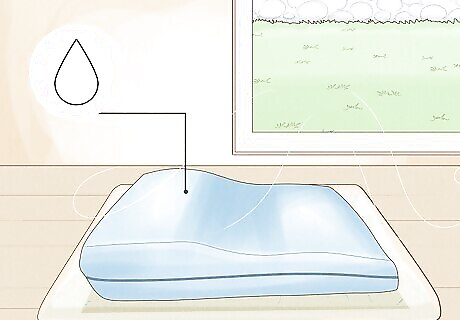
Allow pillow to dry completely. Before your pillow goes back to work, make sure it is fully dry to avoid bacteria or mildew build-up. Hug your pillow tightly and feel all corners to check for damp spots.











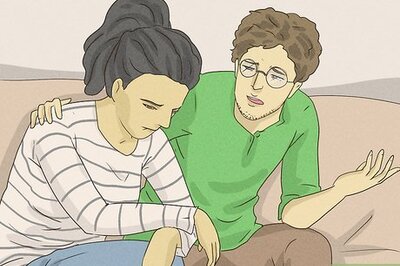





Comments
0 comment